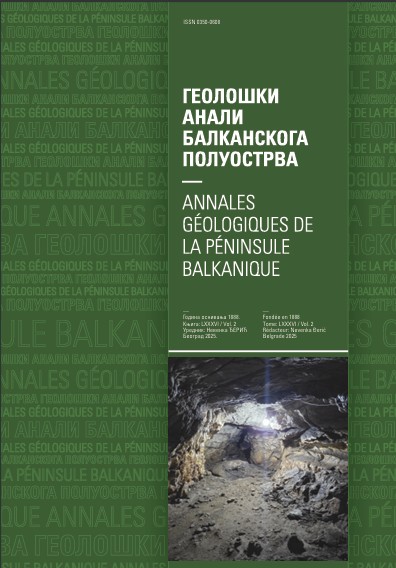Petrology and P-T condition of white mica-chlorite schists from Vlasina series - Surdulica, SE Serbia
Abstract
This paper reports structural, textural, petrological and metamorphic data from Vlasina Series of greenschists rocks (as part of the Upper Complex of the Serbo-Macedonian Massif) within which group of white mica-chlorite schist are extensively developed. This group of rocks made the ground of series in which various types of green rocks appear as a lenses and small irregular mass, rarely as dykes. Other features, that characterize these rocks, are the common occurrence of albite and garnet (subordinate) porphyroblasts, as well as development of quartz segregation. Group of white mica-chlorite schist makes about 75 vol. % of Series. Among them, according to mode and mineral composition, the following schist varieties are distinguished: albite-white mica-chlorite (±garnet), white mica-chlorite (±garnet), albite-white mica, sericite-chlorite (±albite), graphite-sericite as well as phyllites and calcshists. Their metamorphic evolution is characterized by the development of a metamorphic episode during Carboniferous - c. 350-330 Ma (Milovanović et al., 1988) of low to medium P and T. The mineral assemblages of first phase (low PT) is preserved as a very thin Si=S1 foliation included in albite porphyroblast or as small polygonal arcs of S1 in S2 foliation. Textural, mineralogical and petrological data indicate that original volcanoclastic-sedimentary series was transformed during three phase of deformation and metamorphism in the temperature range from 320-415°C, locally 450-500°C and pressures 3 to 5 kbar.
Copyright (c) 2002 Geološki anali Balkanskoga poluostrva

This work is licensed under a Creative Commons Attribution 4.0 International License.










